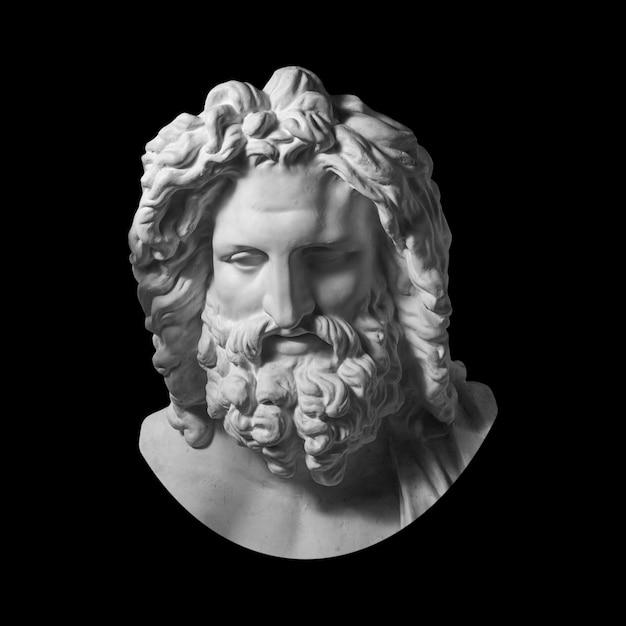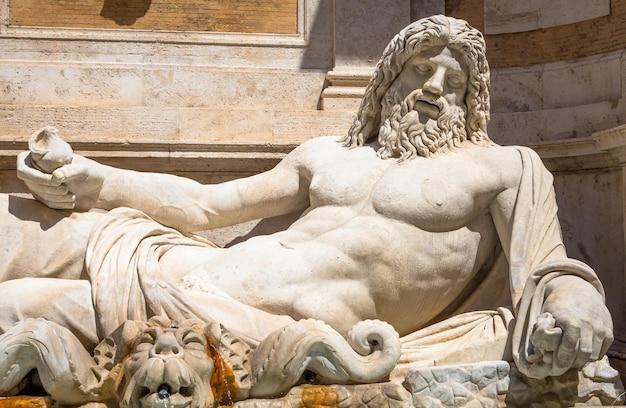Greek and Roman civilizations played a significant role in shaping the world as we know it today. One area where their influence is particularly prominent is in the realm of art. Both cultures produced stunning works that continue to captivate and inspire us even in the modern era. In this blog post, we will delve into the similarities between Greek and Roman art, exploring their shared elements and the ways in which they influenced each other.
From sculpture to architecture, Greek and Roman art shared many similarities due to their close geographical proximity and shared historical roots. The Romans, deeply influenced by Greek culture, borrowed heavily from their artistic traditions. They embraced the beauty and elegance of Greek sculptures and architectural designs, with their own unique twist. Together, they formed a rich tapestry of art that persists to this day.
The Fascinating Similarities of Greek and Roman Art
The Power of Parallels
Greek and Roman art have captured the imagination and awe of people for centuries, and it’s easy to see why. These ancient civilizations produced exquisite works that continue to amaze us to this day. But what are the similarities between Greek and Roman art? Let’s delve into the fascinating world of marble statues and mosaic masterpieces to discover the intriguing connections.
A Mythical Match
Both Greek and Roman art drew heavily from mythology, and it’s no wonder they often depict the same characters. From Zeus to Apollo, the pantheon of gods and goddesses served as the driving force behind many artistic creations. It’s as if the Greeks and Romans placed an order for the same mythical cast, just with different artistic interpretations. Talk about artistic déjà vu!
Marble Marvels
When it comes to sculpture, both ancient civilizations were masters of the craft. Whether it’s the iconic Winged Victory of Samothrace or the awe-inspiring Laocoön and His Sons, Greek sculptures showcased the human body in all its splendor. Roman sculptors, on the other hand, took these influences and added their personal touch. The result? A harmonious blend of Greek finesse and Roman grandeur that left people gawking.
Architectural Affection
Who doesn’t love a good ol’ column or two? Well, the Greeks and Romans certainly did! Both civilizations had a knack for creating stunning architecture that stood the test of time. Greek temples, with their iconic Doric, Ionic, and Corinthian columns, set the stage for their Roman counterparts. The Romans then took these architectural styles, put their spin on it, and voila! The Colosseum and the Pantheon were born. Talk about a design collaboration for the ages!
Mosaic Madness
Picture this: a room adorned with vibrant, intricate mosaic art capturing scenes from daily life and ancient mythology. Well, that’s exactly what Greek and Roman artists did! Mosaics, those mesmerizing pieces made from countless tiny tiles, were popular in both cultures. Whether it’s a charming depiction of a hunting scene or a mythical tale coming to life, these mosaics were a feast for the eyes. It’s like having your very own art gallery right under your feet!
Greek and Roman art share a profound connection that goes beyond the bounds of time. From their mutual love for mythology to their exceptional craftsmanship, these ancient civilizations have gifted us with a rich artistic legacy. So, the next time you admire a spectacular marble statue or marvel at a mosaic masterpiece, remember that you’re witnessing the incredible similarities between Greek and Roman art. It’s a fascinating journey through history, creativity, and the everlasting power of human imagination.
FAQ: What Are the Similarities of Greek and Roman Art
What are the similarities and differences of Greek and Roman art
Greek and Roman art share many similarities, but there are also some notable differences. Both civilizations valued the representation of human anatomy and nature in their artwork. However, Greek art focused more on idealized representations of the human form, whereas Roman art depicted a wider range of subjects, including landscapes, still life, and scenes from daily life.
What is one main difference in Greek and Roman architecture
One major difference in Greek and Roman architecture is the use of the arch. The Romans were master architects and engineers, known for their innovative use of the arch and the development of the dome. Greek architecture, on the other hand, primarily used post-and-lintel construction, with columns supporting horizontal beams.
Who was the ugliest god
According to Greek mythology, Hephaestus, the god of fire and craftsmanship, was considered the ugliest of all the gods. Despite his physical appearance, he was highly skilled and renowned for his ability to create beautiful and intricate works of art.
Which is older, Greek or Roman
Greek civilization predates Roman civilization. The Greeks established their civilization around the 8th century BCE, while the Roman civilization emerged later, around the 8th century CE. The Greek influence greatly shaped Roman art and culture.
What is the most famous Greek art
One of the most famous examples of Greek art is the statue of Venus de Milo. Created between 130 and 100 BCE, this marble sculpture represents the goddess of love and beauty. Its elegant pose and detailed craftsmanship make it an iconic masterpiece of ancient Greek art.
Are there any Greek god statues still standing
While many ancient Greek god statues have been lost to time, a few remarkable examples have survived. One such statue is the colossal statue of Zeus at the Temple of Zeus in Olympia, Greece. Unfortunately, this statue no longer exists, but historical records and descriptions have preserved its legacy.
What are the similarities between Greek and Roman
Greek and Roman civilizations shared numerous similarities due to their close proximity and historical connections. Both cultures believed in a pantheon of gods, valued art and literature, and had democratic systems of government. Additionally, they both enjoyed athletic competitions, such as the Olympics.
What are the similarities between Greek and Roman art and architecture
Greek and Roman art and architecture share many similarities in terms of style, techniques, and subject matter. Both civilizations valued the representation of the human figure, incorporated natural elements in their designs, and employed similar architectural features, such as columns, friezes, and pediments.
What is the difference between Greek and Roman civilization
While Greek and Roman civilizations had many similarities, there were also important differences between the two. Greek civilization was characterized by its focus on philosophy, democracy, and individualism, while Roman civilization emphasized engineering, law, and administration. Additionally, Greek culture was more influenced by mythology and religious beliefs.
What is today’s art called
Today’s art encompasses a wide range of styles, techniques, and mediums, making it difficult to assign a single name to the entire contemporary art scene. Some commonly used terms to describe modern art include “contemporary art,” “postmodern art,” or simply “modern art.” These terms encompass various artistic movements and trends that have emerged in recent decades.
What is Greek and Roman culture called
The collective culture of ancient Greece and Rome is often referred to as Greco-Roman culture or classical antiquity. This term recognizes the significant influence and interplay between these two civilizations, particularly in areas such as art, philosophy, literature, and politics.
Who came first, Greeks or Romans
The Greeks came first, establishing their civilization around the 8th century BCE, while the Romans emerged later, around the 8th century CE. The Romans were heavily influenced by Greek culture and adopted many aspects of Greek art, architecture, and mythology.
How did Greek art begin
Greek art originated in the Geometric period around the 9th century BCE. During this time, artists began depicting geometric patterns and stylized animal motifs on pottery and other artworks. The art then evolved through the Archaic, Classical, and Hellenistic periods, showcasing advancements in techniques, subject matter, and realism.
Why are Greek and Roman beliefs so similar
The similarities between Greek and Roman beliefs can be attributed to the influence and interaction between the two civilizations. As the Romans conquered Greek territories, they absorbed many aspects of Greek culture, including their religious beliefs and mythology. The Romans often adopted Greek gods and integrated them into their own pantheon.
Why did the Romans copy Greek art
The Romans greatly admired Greek art and recognized its artistic and aesthetic value. Greek art represented an idealized version of beauty and craftsmanship, which the Romans sought to emulate and incorporate into their own artistic traditions. They saw Greek art as a symbol of cultural sophistication and sophistication.
What is Greek and Roman art
Greek and Roman art refer to the artistic traditions of ancient Greece and Rome, respectively. Greek art is characterized by its focus on naturalism, idealism, and the representation of the human form. Roman art, on the other hand, encompasses a wider range of subjects and styles, incorporating elements from various cultures and periods.
What are the Greek statues called
The Greek statues are commonly referred to as sculptures or statues. These artworks were created using various materials, such as marble, bronze, and clay. Greek statues are known for their attention to detail, idealized proportions, and the portrayal of various mythological and historical figures.
What influenced Greek art
Greek art was influenced by various factors, including mythology, religious beliefs, philosophy, and historical events. The Greeks drew inspiration from their pantheon of gods and goddesses, exploring themes of heroism, beauty, and the human condition. They also incorporated elements from other ancient civilizations, such as Egypt and Mesopotamia.
What is the Greek word for art
The Greek word for art is “techne,” which encompasses a broader concept than the modern understanding of art. In ancient Greece, “techne” referred to craftsmanship, skill, and the mastery of a particular craft or discipline. It encompassed various artistic practices, including sculpture, painting, architecture, and pottery.
What do both Greek and Roman gods have in common
Both Greek and Roman gods share many similarities due to the Romans’ adoption and adaptation of Greek mythology. Many Greek gods and goddesses were assimilated into the Roman pantheon, often with slight name changes. Both sets of gods were believed to have similar powers and attributes, governing various aspects of the natural world and human existence.
What was the major difference between Greek and Roman art
One major difference between Greek and Roman art is the subject matter. Greek art often focused on depicting gods, goddesses, and mythological scenes, while Roman art encompassed a broader range of subjects, including everyday life, portraits, and historical events. Additionally, Roman art often emphasized realism and detail more than Greek art.
Did Rome and Greece ever fight
Yes, Rome and Greece did engage in warfare. Initially, Rome and Greece were separate civilizations, and they had conflicts during the Roman conquests of Greek territories. The Roman Republic and later the Roman Empire expanded their influence over the eastern Mediterranean, conquering major Greek city-states and territories. However, it’s important to note that the Romans also greatly admired Greek culture and art, leading to significant cultural exchange and influence.

